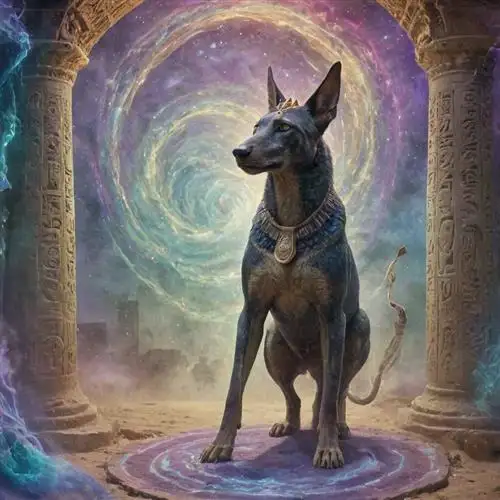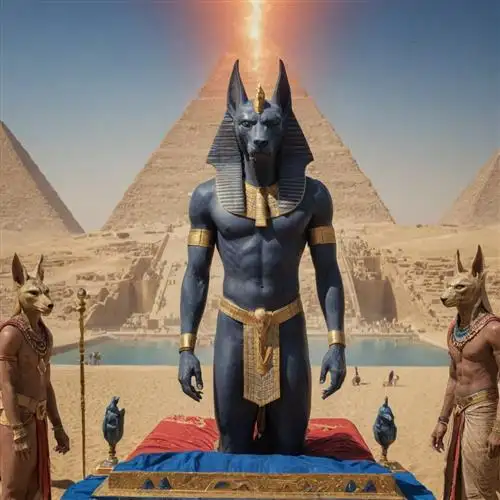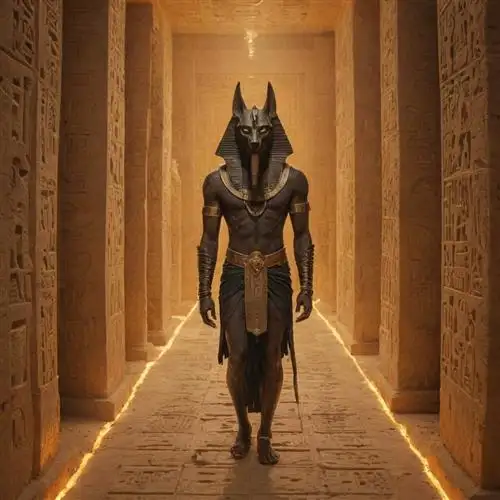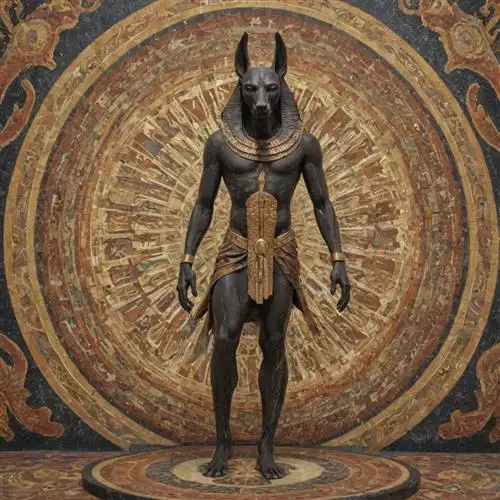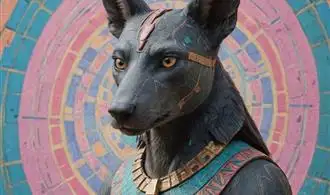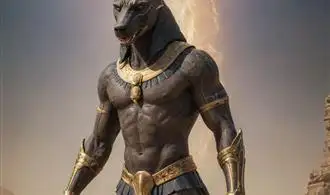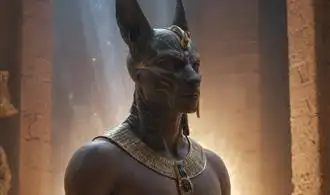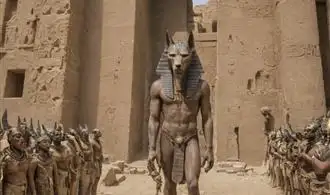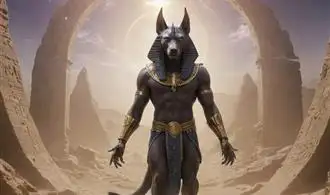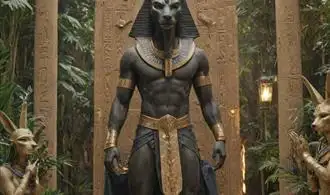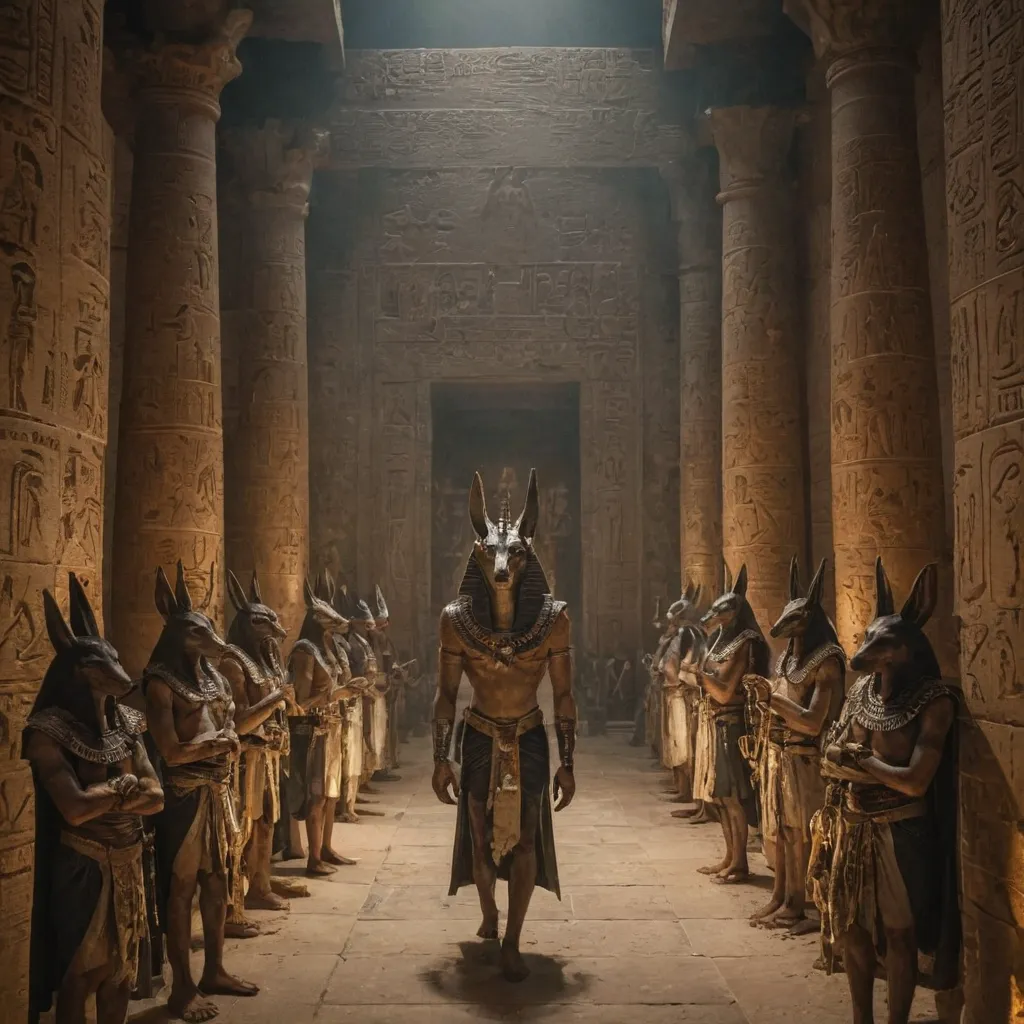
The Enigmatic Jackal-Headed God
Anubis, the enigmatic jackal-headed deity, has captivated the imaginations of scholars and enthusiasts alike for centuries. This ancient Egyptian god, associated with mummification, the afterlife, and the protection of the dead, holds a profound significance within the pantheon of Egyptian mythology.
At the heart of Anubis' symbolism lies the jackal, a creature deeply connected to the liminal spaces between the living and the dead. The jackal's ability to navigate the desert and its association with cemeteries and burial grounds have led to Anubis' role as a guide and guardian of the deceased, responsible for overseeing the delicate process of mummification and the journey to the afterlife.
Interestingly, the jackal-headed form of Anubis may have been inspired by the African wild dog, a pack-hunting canine with distinctive black and tan markings. This connection to a living, breathing animal adds a layer of tangibility to the god, grounding his divine nature in the natural world.
Anubis' role in the afterlife is particularly intriguing, as he is believed to have been responsible for weighing the deceased's heart against the feather of truth during the final judgment. This ritual, known as the "Weighing of the Heart," determined the worthiness of the individual, with those found wanting being subject to a second death, or "devouring."
The symbolism of Anubis extends beyond the afterlife, as he was also associated with the protection of the living. Aspects of his iconography, such as the black color of his skin and the upright ears of the jackal, have been linked to the concept of regeneration and the ability to traverse the realms of life and death.
Furthermore, Anubis' presence in the Egyptian pantheon serves as a reminder of the complex and multilayered nature of ancient Egyptian religious beliefs. His association with both the mummification process and the final judgment of the dead highlights the profound significance of death and the afterlife within this ancient culture.
Anubis and the Afterlife
Anubis, the enigmatic jackal-headed deity, holds a prominent place in the rich tapestry of ancient Egyptian mythology. As the god associated with the afterlife, Anubis played a crucial role in guiding the deceased through the complex and often treacherous journey to the Underworld. Understanding the symbolism and significance of Anubis's connection to the afterlife is essential for unlocking the deeper layers of this ancient belief system.
At the heart of Anubis's role in the afterlife lies his function as the guardian of the mummification process. As the Egyptian god of embalming, Anubis was responsible for ensuring the proper preparation and preservation of the deceased's physical body. This meticulous process was believed to be essential for the soul's successful transition to the afterlife, as the body served as a vital vessel for the ka (life force) and the ba (personality).
Anubis's association with the afterlife extends beyond the mummification process. He was also believed to be the guide who accompanied the deceased to the Hall of Judgment, where the heart of the dead was weighed against the feather of Ma'at, the goddess of truth and justice. This crucial moment determined the fate of the soul, as those found worthy would be granted access to the Underworld, while the unworthy would face the devouring of their heart by the fearsome demon Ammit.
The symbolism of Anubis's jackal-headed form further reinforces his role in the afterlife. The jackal, a scavenger animal known to frequent cemeteries and burial grounds, was believed to possess a close connection to the realm of the dead. Anubis's canine features, therefore, represented his ability to traverse the boundary between the living and the dead, guiding the deceased and protecting them on their final journey.
Additionally, Anubis was often depicted holding the ankh, the ancient Egyptian symbol of life, further emphasizing his role as a deity who facilitated the transition from life to death and beyond. The ankh was believed to be a key that unlocked the mysteries of the afterlife, granting the deceased the ability to continue their existence in the Underworld.
Anubis as a Guide and Protector
Anubis, the jackal-headed Egyptian deity, holds a significant place in the pantheon of ancient Egypt. Known as the god of the dead, Anubis played a crucial role in guiding and protecting the deceased on their journey to the afterlife. This aspect of Anubis as a guide and protector is integral to understanding the depth and complexity of his symbolism.
As a guide, Anubis was responsible for leading the deceased through the challenging and often perilous underworld. He would carefully weigh the heart of the deceased against the feather of Ma'at, the goddess of truth and justice, to determine their worthiness for the afterlife. This process, known as the "Weighing of the Heart," was a critical moment in the journey, and Anubis' presence ensured the deceased received a fair and just evaluation.
Anubis' role as a protector extended beyond the physical realm. He was believed to safeguard the deceased during the embalming process, ensuring the proper preservation of the body. This was a crucial step in the mummification process, as the body needed to be prepared for the journey to the afterlife. Anubis' presence during this ritual not only ensured the physical protection of the deceased but also symbolized the spiritual protection they would receive in the next life.
Furthermore, Anubis was associated with the concept of rebirth and regeneration. His jackal-like features were believed to represent the cycle of life, death, and rebirth, with the jackal being a symbol of transformation and renewal. This connection to the cycle of life reinforced Anubis' role as a guide and protector, as he helped the deceased navigate the transition from this world to the next.
In addition to his duties as a guide and protector, Anubis was also known as the patron of cemeteries and embalming. He was responsible for overseeing the proper burial and preservation of the dead, ensuring the deceased were prepared for their journey to the afterlife. This aspect of Anubis' role further emphasized his importance in the ancient Egyptian belief system, as the care and respect for the dead were crucial to their successful transition to the afterlife.
The Symbolic Duality of Anubis
Anubis, the ancient Egyptian god of the dead, is often depicted with the head of a jackal or a dog. This unique representation symbolizes the dual nature of this powerful deity. On one hand, Anubis is the guardian of the necropolis, overseeing the sacred rituals of mummification and the journey of the dead into the afterlife. His presence at the embalming table and in the burial chambers signifies his role as the protector of the dead, ensuring a smooth transition to the next world.
However, Anubis' canine-like features also allude to his more primal and instinctual aspects. Jackals and dogs were known to scavenge around cemeteries and graveyards, feeding on the remains of the deceased. This association with the physical decomposition of the body gives Anubis a darker, more ominous connotation. He is not merely the benevolent guide of the dead, but also the embodiment of the natural processes that reclaim the physical form, returning it to the earth.
This duality in Anubis' symbolism reflects the complex and often paradoxical relationship between life and death, light and darkness, and the physical and the spiritual realms. As the gatekeeper between the world of the living and the dead, Anubis represents the threshold where these opposing forces converge, reminding us of the cyclical nature of existence.
The Rituals and Ceremonies of Anubis
The Rituals and Ceremonies of Anubis, the ancient Egyptian god of death and the afterlife, hold a profound and captivating significance. As one of the most revered deities in the Egyptian pantheon, Anubis played a crucial role in guiding the deceased through the complex and intricate journey of the afterlife. Unraveling the symbolic meaning and ceremonial practices associated with this enigmatic figure offers a deep dive into the rich tapestry of ancient Egyptian beliefs and traditions.
Central to the rituals and ceremonies of Anubis was the mummification process, a meticulous and sacred rite that ensured the preservation of the deceased's physical form. Anubis, the jackal-headed god, was believed to oversee this transformative process, guiding the soul through the delicate stages of embalming and preparing the body for its eternal rest. The The Surprising Secrets of Anubis article delves deeper into the symbolic significance of Anubis's role in this hallowed procedure.
Beyond the mummification rites, Anubis also played a central role in the funerary ceremonies and the journey of the soul through the afterlife. The weighing of the heart ritual, where the deceased's heart was weighed against the feather of truth, was presided over by Anubis, who ensured the integrity of this pivotal moment. The god's presence was believed to be essential in guiding the soul through the underworld, ensuring a successful transition and the ultimate judgement before the divine court.
Interestingly, the worship of Anubis extended beyond the realms of death and the afterlife. Certain temples and shrines dedicated to the god were also believed to serve as centers of healing and rejuvenation, as Anubis was associated with the restoration of health and the preservation of life. The rituals and ceremonies conducted within these sacred spaces often focused on invoking the god's protective and restorative powers.

